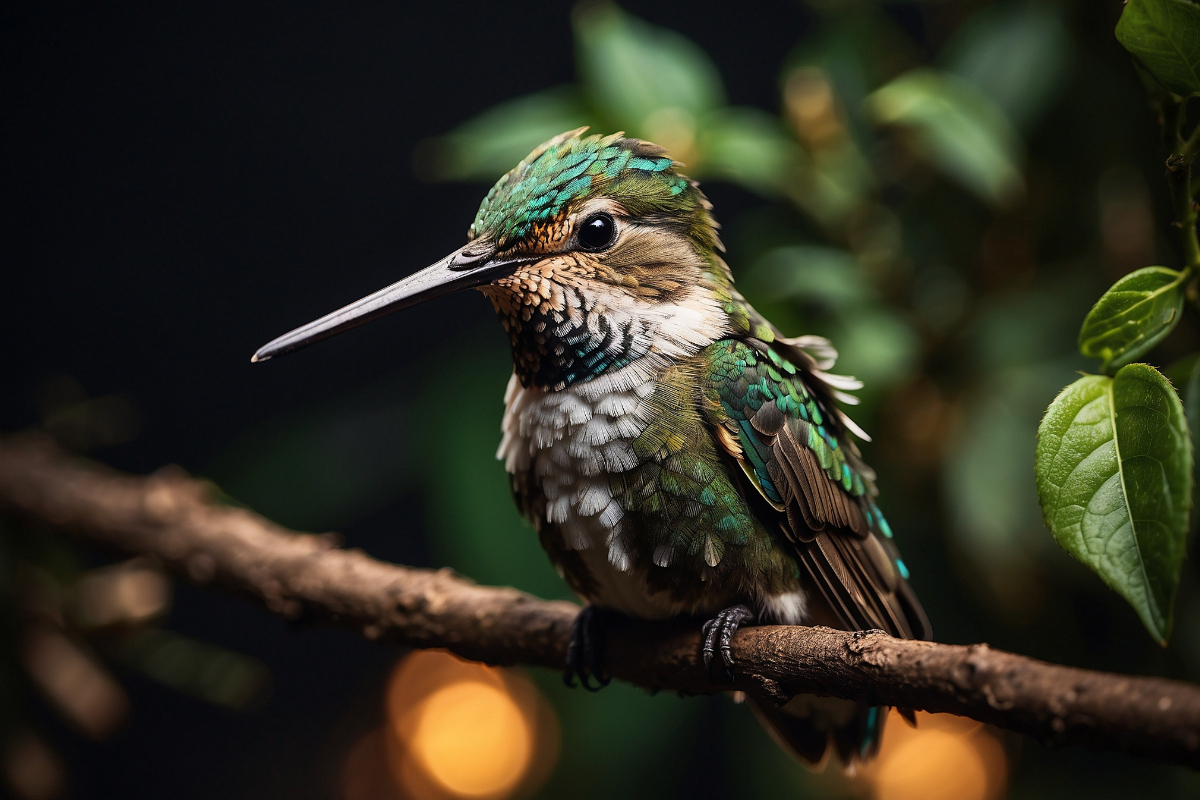Have you ever been curious about where hummingbirds go at night? These small and energetic birds captivate us with their ability to hover in flight and beat their wings rapidly. But when the sun sets, they seem to disappear completely.
In this blog post, we will delve into the intriguing nocturnal behaviors of hummingbirds. We will explore where they sleep, how they enter a state called torpor to conserve energy, and the dangers they face during the night.
Where Do Hummingbirds Sleep at Night?
Hummingbirds require a significant amount of food to fuel their rapid metabolism and flight muscles. So when night falls and flowers close, they must find safe places to sleep and conserve energy.
Many people assume that hummingbirds sleep on tree branches or in nests. However, their sleeping habits actually vary depending on factors such as species, location, stage of life, and weather conditions. They are adaptable in choosing sleeping sites.
Here are some of their preferred nocturnal accommodations:
- Dense Trees and Bushes: Shrubs and trees provide cover from the weather and camouflage from predators. Some hummingbirds prefer pine trees.
- Nests: Female hummingbirds sleep on nests to keep their eggs warm, while males sleep nearby to protect and feed the mothers.
- Cavities: Abandoned woodpecker holes and other natural hollows provide shelter for hummingbirds.
- Silk Bags: In colder climates, Anna’s hummingbirds weave silky sleeping bags attached to branches to enhance insulation.
Understanding the sleeping sites that appeal most to hummingbirds in your area can help create a better habitat in your backyard. By providing suitable trees, shrubs, flowers, and feeders, you can attract these aerial masters to stay overnight.
Torpor: The Energy-Saving Sleep State
So, how exactly do hummingbirds sleep? They enter a state called torpor, which is similar to extreme hibernation. Torpor is crucial for their survival.
During torpor, a hummingbird’s metabolic activity significantly decreases. Their heart rate, breathing rate, and body temperature all decrease, allowing them to conserve a tremendous amount of energy throughout the night.
In torpor, hummingbirds experience:
- Fat stores meeting only 10% of their daytime energy use.
- Oxygen consumption decreasing by an astonishing 99%.
- A remarkable drop in heart rate from 500 beats per minute to 50 beats per minute.
By utilizing their torpor superpower at night, hummingbirds can stretch their limited energy stores much further. This helps compensate for their inability to find nectar sources after dark.
Special Skill Sets of Migrating Hummingbirds
The sleep habits and preferences of migrating hummingbirds differ significantly from those of breeding and nesting birds. Let’s explore these differences:
Fat Storage: Migrating birds switch to a hyperphagia diet, seeking the most energy-rich sugars available. This intensive eating allows them to accumulate thick fat layers, which are critical fuel for their lengthy flights.
Flexible Feeding: Hummingbirds typically feed every 10-15 minutes. However, migrating hummingbirds can go without eating for up to 18 hours by lowering their metabolism through torpor. This energy-saving strategy helps them cope with scarce food sources.
Opportunistic Lifestyles: Migrating hummingbirds stay alert and sleep in short bursts while resting. This flexibility allows them to take advantage of variable food supplies during their strenuous journeys.
Broad Habitat Tastes: Non-migrating hummingbirds have specific habitat preferences for breeding sites. In contrast, migrating hummingbirds are more tolerant of diverse landscapes, climate zones, elevations, and types of shelter.
Dangers Faced by Hummingbirds at Night
Hummingbirds already face constant threats from predators during their busy daytime hours. However, the additional dangers that emerge at night require them to be exceptionally cautious when seeking rest. Let’s explore the top threats they face:
Lack of Food: Without active flowers or insect swarms, nights bring the risk of running out of the quick energy hummingbirds need. Even a few hours without feeding can be devastating. Choosing sleep sites near reliable food sources at dawn helps mitigate this risk.
Exposure and Weather Extremes: Frigid temperatures, storms, or heatwaves can rapidly deplete the tiny energy reserves and sugar levels of hummingbirds. Some species have adapted sleeping behaviors, such as silk nests or torpor states, to cope with these weather extremes.
Owls and Other Expert Nocturnal Hunters: Owls have exceptional night vision and silent flight. Some owls specialize in hunting hummingbirds, with adaptations like reversible outer toes. Roosting sites must provide dense cover to hide from these skilled predators.
Habitat Loss: As forests decline and wildlands are replaced by human settlements, crucial shelter areas and diverse bloom zones disappear. Hummingbirds must cover more ground in search of new homes, exposing them to higher threats.
Final Thoughts
The next time you hear a lonely hum as darkness approaches, take a moment to appreciate the incredible journey hummingbirds undertake every day. Their ability to find safe rest is just one chapter in the marvels of their existence. Our understanding of their nighttime habits continues to evolve, just as their wings beat rapidly. Each glimpse into their world reveals more of the magic within.
By committing to their thriving, we ensure the continuation of their peaceful and serene environment. I hope you’ve learned something new and informative about hummingbird sleeping patterns!
